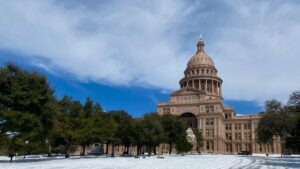Mar 23, 2021 | News

By Joshua Rhodes, Ph.D
With sunny days and afternoon temperatures pushing into the 80s, it is hard to believe that just over a month ago, Texas was in the grips of a historic freeze that broke both the natural gas and electricity systems and left millions of Texans shivering in the dark. If only there was some way to harness all of the hot air from all of the terrible hot takes out there, we could probably power the entire grid through the summer.
At a high-level, the grid failed to match supply and demand. And just like in any market where there is not enough supply to meet demand, not everyone who wants the product – in this case, electricity – was able to get it. What makes electricity different than other products is that if real supply-demand mismatches are allowed to persist, the entire market collapses and no one is able to get electricity. In fact, the Electricity Reliability Council of Texas (ERCOT), the grid operator that services about 90 percent of Texas customers, said that they were within a few minutes of a catastrophic grid collapse that could have taken days if not weeks to bring back online.
When one thinks of Texas, one doesn’t usually think of snow and ice. More likely, cowboys and the hot Texas sun come to mind. However, at the coldest part of the storm, all 254 counties of Texas were under a winter storm watch at the same time, something that has never been recorded in our state. The cold snap in 2011 that induced a few hours of rolling blackouts wasn’t nearly as cold, widespread, nor did it last as long. To find the most comparable weather event, one has to go as far back as 1989. So, while these events are rare, they are not without complete precedent.
In the end, the projected peak demand for the ERCOT system at 11 am on Tuesday, February 15th was about 76,679 MW, about 19,000 MW more demand than projected for this winter and about 9,400 MW more than the most demand we have ever seen in winter. To put it further in perspective, ERCOT’s all-time peak demand record is 74,820 MW, set in August of 2019. We never hit that new peak, because the grid could not supply that much energy. Instead, we had to turn off the power to millions of Texans for multiple days.
About 60 percent of homes in Texas use electricity for heating, and the other 40 percent use natural gas[1]. Also, roughly half of the power plant fleet in ERCOT runs on natural gas. The record cold meant that Texas homes and power plants were demanding record amounts of natural gas for heating and the electrified homes were demanding record amounts of electricity for their heat. At the same time, the record cold reduced the amount of natural gas well production by roughly half.
In the end, we were unable to deliver enough natural gas to meet both home heating and power plant needs. Additionally, because multiple wind, coal, nuclear and natural gas plants froze, we were short somewhere close to half of our generation capacity – not a good place to be when you’re expecting record levels of demand.
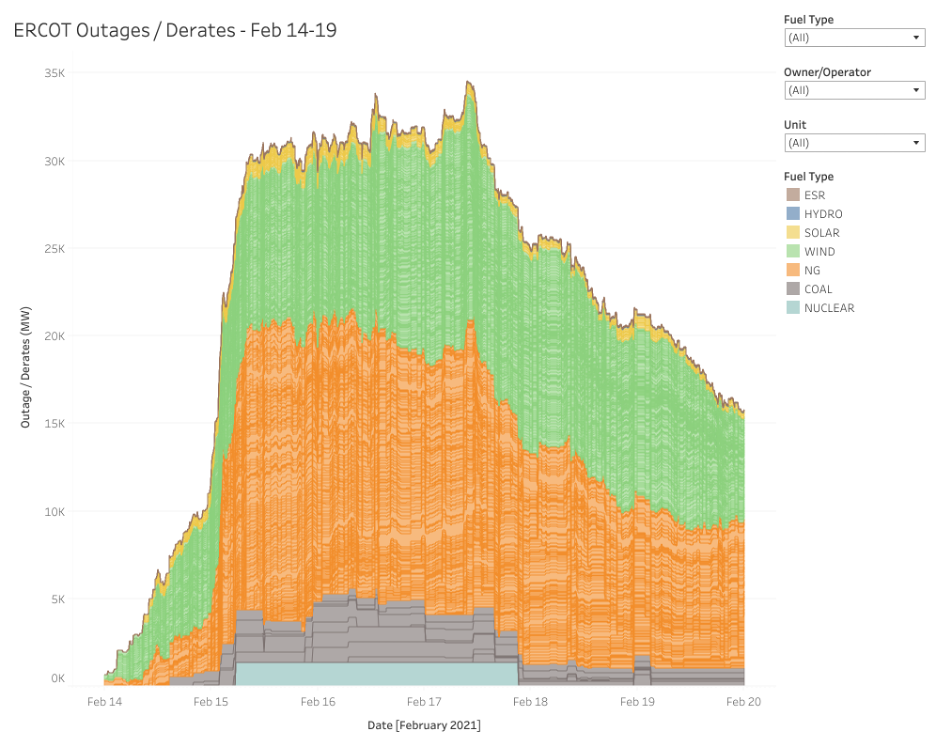
Figure 1: Figure showing all power plant derates and capacity losses for all fuel types during the Texas blackouts. Visualization by Brendon Pierpont: https://twitter.com/brendanpierpont/status/1368066372702326787?s=20
The grid, however, doesn’t rely on all resources equally during winter peaking events. In planning for winter peaks that typically occur early on winter mornings, the grid operator knows that solar and wind are not likely to produce and doesn’t plan for them to be.

Figure 2: Technology performance by fuel type during the Texas blackouts. Chart by Blake Schaffer: https://twitter.com/bcshaffer/status/1364635620706971651?s=20
If we look at how each resource performed during the blackouts (Figure 2), only nuclear, wind and solar produced at or above their critical minimum levels (red dotted line) for at least part of the time.
Utility-scale solar performed very well, in part because most large solar arrays track; they’re able to rotate away from the snow, then back and forth to allow the snow to fall off. Utility-scale solar is small, relative to other resources in ERCOT, but generally, it overperformed once the sun came out. Distributed solar is slightly different. Although it’s usually fixed and cannot shed snow as easily, that did not mean that they didn’t perform well.
Data from Pecan Street Inc, a smart-grid research and development group based in Austin, recently detailed how real-world solar PV systems performed during the Texas freeze. They found that residential solar array production was down about 60 percent (based on days with similar amounts of sunlight) during the first couple days of the event, but eventually bounced back to normal levels once the snow melted (Figure 3).

Figure 3: Solar radiation vs. distributed solar production during the Texas blackouts. Data and chart by Pecan Street Inc., used by permission. https://www.pecanstreet.org/2021/02/solarstorm/
The entire week is one that many Texans hope never happens again. One lesson we are learning is that systems are only as good (but sometimes worse) as what you plan for. Not all types of generation fulfill every task that the grid needs, but that doesn’t mean that they’re not useful.
I don’t put my flip-flops away in the winter because they don’t keep my feet warm. Truth is, they are great almost nine months out of the Texas year! We need a strong, resilient and diverse mix that includes a lot of solar to make sure that we are better prepared for whatever the climate throws at us.
[1] There are other sources, but they are much smaller comparatively.
Joshua D. Rhodes, Ph.D. is a Research Fellow at the Webber Energy Group at the University of Texas at Austin and a Founding Partner of IdeaSmiths LLC. His current research is in the area of smart grid and the bulk electricity system, including spatial system-level applications and impacts of energy efficiency, resource planning, distributed generation, and storage. Joshua is also the secretary of the TXSES board of directors.
Mar 19, 2021 | News
I thought my first Solar Reflector article would focus on why I returned to TXSES. I felt an urgency to speak out against under-the-radar attacks on solar on the customer side of the meter; how we need to stop policy roadblocks that are under construction in Texas. That alone would have been a worthwhile goal.
And then at our Annual Meeting, I heard the TXSES regional chapters share what has been keeping them busy. I was humbled and impressed with the myriad efforts and innovative projects underway across the state.
What stood out about the chapters’ efforts was not only were they trying to defend net-metering on the customer side of the meter, they were also integrating solar with essential elements of society. Whether workforce development, by bringing the under-represented into our industry, or solarizing food trailers that bring fruits and vegetables to food deserts, these projects benefit not just one individual but communities writ large.
I began to rethink what I want to accomplish as TXSES board chair this year.
Enter The Big Freeze, and although we’re still too close to the calamity to joke about it, I realized then that my focus needed to include more than net-metering for homeowners. Instead, it needs to spotlight the relentless big, bold thinking and synergy happening in our chapters. This is how distributed solar makes our Texas communities a better place for more of us.

The Blanco Vista neighborhood of San Marcos was blanketed with several inches of snow Feb. 15 after a massive winter weather system engulfed Texas, causing widespread power outages across the state. Credit: Jordan Vonderhaar for The Texas Tribune
Our grid was tested. Unfortunately, but predictably, politicians were pointing fingers and were quick to assign blame. Despite claims by the Governor that renewables were the culprit, the real story was that the grid-at-large failed on multiple levels.
The current electric grid, that electric network paradigm, has been with us for nearly 150 years. What have we really done to improve it? Nationally? Here in Texas? While we’ve tinkered around the edges with various strategies like smart meters, has the grid changed much with the technology from our solar industry?
Bright examples shine (rooftop aggregation for virtual power plants comes to mind from San Antonio and CPS), but across Texas, the grid network runs pretty much in the same form today as it did more than one hundred years ago. Power flow is unidirectional: from big power plants to your home. We know now that this system is fallible.
Across the TXSES membership community, we have shining examples of resiliency that we must multiply 1000-fold. Bringing solar and storage to our homes, neighborhoods, cities, counties will reinforce and bolster the grid. We can transform it to a better, more modern grid network where the flow of amps is not just plant-to-home but back and forth bidirectionally, vertically and horizontally.
We have the leaders on this board to get after this. Thanks to our recently-awarded Meadows grant, we’re able to pursue those big, bold ideas that can change our energy story. Our talented chapters are taking big ideas and pairing them with local and regional projects that are making a real difference.
This year, let’s all tell the story about how distributed solar plus storage modernized the Texas grid from its century-old paradigm of one-way electricity flow into the most resilient, adaptive electrical mesh-network that makes us the envy in the U.S. and world.
I look forward to your ideas to move forward and not look backward.
i
Mar 17, 2021 | News

Jason Pittman
PresidentGoSmartSolar
How often do you wander into your boss’s office to resign and he ends up offering you something you really want to do? In Jason Pitman’s case, it was leading the clean energy and sustainability business line for a global consulting firm. Jason’s 18 years of clean energy experience ranges from large utility-scale systems and distributed residential and commercial systems to the development and execution of utility integrated solar programs. In 2016, Jason co-founded Go Smart Solar as a way to develop innovative business models that would lower the cost of solar because, as he says, ‘…the benefits of solar energy should be available to everyone.’
We caught up with Jason recently to talk about – what else – solar writ large and community solar specifically. Here’s our conversation.
TXSES: From environmental engineering in school to Go Smart Solar, it seems like you were destined to be an innovative presence in the solar space.
JP: I was fortunate to have the opportunity to focus on clean tech and sustainability for more than a decade while at URS Corporation. I was, and still am, driven by an environmental ethic. While at URS, I built a B2B focused business line around solar and sustainability. After URS, I spent three years at a small solar developer developing utility integrated solar programs. I really wanted to make a difference, to help more people directly benefit from solar by lowering their energy burden and cutting personal emissions, and that meant distributed generation. Both of these experiences helped me understand the importance of leadership and recognized opportunities to leverage innovation to solve energy market challenges like access to capital and credit, value stacking, utility models, homeownership requirements, and equity issues in the community. Once I met my co-founder, Robert Miggins, building an innovation-driven energy company to solve these challenges was the obvious next step.
TXSES: That’s a different, distinct set of hurdles. How did you switch?
JP: There are barriers to going solar, like up-front costs, owning a home, having a viable roof. What motivated me to pivot from utility-scale to community-scale solar and partnering with utilities through innovative business models. At Go Smart Solar, we veered from solar’s environmental benefit to community solar’s more equity-centric mindset: solar should and could be available to everyone regardless of their economic status.
TXSES: Solar is such a democratic resource. The sun shines everywhere. But how do you help utilities overcome their solar fears? Utilities make money when they generate power. If more people put solar on their roofs, utilities might perceive this as a threat to their bottom line and make it difficult for folks to go solar with unnecessary fees and punitive policies. This isn’t a new tactic.
JP: Go Smart Solar isn’t in the business of trying to put utilities out of business. In fact, we want to help them deploy as much solar as they possibly can. We made a decision early on that if we were going to achieve our goal of more solar for more people, we need to partner with utilities not work against them. We’ve found that if you have an idea that checks all the boxes and makes sense, utilities will consider it.
TXSES: And speaking of utility partnerships, talk about Big Sun Community Solar, Go Smart Solar’s partnership with City Public Service Energy (CPS).
JP: In late 2018, we were awarded a CPS Energy contract to build, operate and maintain 5MWac of community solar. This 5MW was broken up into 12 different facilities…solar carports, to be exact, all around the San Antonio community. We think covering large parking lots makes sense (think heat islands). And who doesn’t want covered parking in Central Texas – solar PV covered parking at that! We launched the program, started building the generating assets and began selling to customers. And then COVID hit.
TXSES: Ouch. How did that affect the roll-out?
JP: It definitely had an effect, but despite the pandemic, we pushed. Robert and I made a decision early on, we wouldn’t furlough or lay off any of our staff due to the pandemic. Instead, we focused on creating positive user experience by investing more resources in our solar technology platform Core99. Core99 is our utility and customer facing software platform which drives all our community solar programs. Then we focused on the customer through customer service and the UI/UX- we helped customers figure out the right number of panels that’s best for them. Customers could buy as little as one panel or enough to offset 100 percent of their load. The average offset is about 80 percent. What’s so great about this project is that it doesn’t matter where in CPS service territory you live. The credit will follow you wherever you move. We also offered a down payment assistance and financing program for low-income customers.
TXSES: Are there any spots left?
JP: We sold all 5MW! CPS Energy started its community solar program back in 2016 with a very successful 1MW pilot program which prompted the 5MW project.
TXSES: That’s great. Given the recent Texas grid blackout, it’s not hard to assume distributed solar is a smart idea. Have you seen an uptick in business?
JP: Distributed solar is beneficial anytime you generate energy. Next to the point of consumption, generation adds operational value to the grid. There’s no congestion risk, plus we can target stressed areas of the grid. During the blackout, we learned that some of our systems were connected to critical circuits which meant they continued to produce power during the rolling outages. In the future, we’d like to be able to connect our assets to critical circuits which would provide more value and certainty to the grid. Plus, these community-scale projects are highly visible in the community.
TXSES: What’s one of Go Smart Solar’s biggest challenges?
JP: Perhaps one of the biggest challenges is how to address bad actors in the solar industry: those who don’t give consumers the facts and distort the truth; they install panels on shaded roofs and assure consumers electric bills will be zero. That’s who we’re in competition with. Ultimately, it’s up to consumers to be well-informed before they buy anything; caveat emptor. But solar rooftop systems are complicated. Consumers don’t think about kilowatt hours or annual maintenance. If you put solar on your roof and the solar installer says it’ll produce x/kWh/month and your local utility gives you a rebate, who’s tracking production? What about consumer protection around long-term performance? Unfortunately, there’s no code of ethics. We at Go Smart Solar look at the consumer experience with an eye toward advocacy.
TXSES: Have you heard about SB 398 (Sen Menéndez), the Solar Consumer Protection Act? Among other things, it includes mandatory minimum disclosures for purchasing, leasing and purchasing power agreements. We’ll be keeping an eye on this one. What’s surprised you the most about this work?
JP: Deploying Big Sun Community Solar. There are so many people who really want to do something to help protect the environment and fight climate change. They know the very least thing they can do is recycle because that doesn’t cost anything. They feel like they couldn’t adopt solar because it’s expensive. But through these community solar projects, more people are able to go solar because we’re using innovation to eliminate barriers. It continues to be so rewarding to be part of this work.
TXSES: It’s our great good fortune you’re part of the Texas solar community, Jason. Thanks so much for sharing your work with us.
Mar 3, 2021 | News
The Texas Solar Energy Society (TXSES) today announced it has received a $75,000 grant from the Texas-based Meadows Foundation. These funds will support TXSES’s mission to ensure equitable access to solar energy for every Texan.
“We are so appreciative of the generous support from The Meadows Foundation,” said Patrice ‘Pete’ Parsons, TXSES Executive Director. “These funds will enable TXSES to leverage its renowned educational and outreach expertise that will support ambitious clean energy and carbon reduction goals, enhance the resilience and reliability of the grid and build strong, well-informed solar communities throughout Texas.”
The grant funds will support:
- a statewide Solar Energy Internship Program (SEIP) to facilitate pathways to jobs and opportunities in solar energy for female students and students of color
- community solar opportunities for low-income and multi-family properties
- establish two additional TXSES chapters in Midland/Odessa and Edinburg/Hidalgo counties, representing more than one million Texans
About The Meadows Foundation
Established in 1948 by Algur H. and Virginia Meadows, The Meadows Foundation exists to assist the people and institutions of Texas improve the quality and circumstances of life for themselves and future generations. The Foundation has disbursed more than $1.25 billion to 3,600 Texas institutions and agencies across Texas. Grants are awarded to 501(c)(3) organizations and public entities in the areas of arts and culture, civic and public affairs, education, health, and human services as well as initiatives promoting the environment, mental health, and public education. For additional information, visit www.mfi.org.
Feb 22, 2021 | News
 February 22, 2021
February 22, 2021
Excerpted from pvmagazine
By David Brearley, TXSES Board Member
As my wife and I melted snow this past week to flush the toilets in our 100-year-old East Austin home, located a short walking distance from the Texas State Capitol, it occurred to me more than once that the slope from pride to hubris is slippery and treacherous, much like the steps out our front door and streets all across our frozen and paralyzed state.

Texas capitol. Image: David Brearley
For three days we had no heat or power as overnight lows fell to 5°F (-15°C). A week later, line crews were still restoring power to some homes and businesses.
Cruel metrics
Based on a cruel combination of metrics, the Arctic air that wobbled down from the North Pole and parked itself over Texas is a clear contender for the worst winter storm in a century.
- In terms of severity, few winter storms over the past 100 years have notched colder freezing temperatures.
- In terms of duration, few freeze events have lasted as long without breaking.
- In terms of extent, for the first time ever all 254 counties in Texas—a state that is two time zones wide—were simultaneously subject to a winter storm warning. It was colder in Dallas, Texas, than in Anchorage, Alaska.
This was a record-breaking storm that likely inflicted record-insured losses. Many insurance industry experts and associations already project that this winter storm will constitute the largest insurance claim event in Texas history, both in terms of the cumulative number and the total value of claims.
Read the article in its entirety.
Feb 22, 2021 | News
From Aljazeera News to the New York Times to the Christian Science Monitor, Joshua Rhodes, research fellow at the Webber Energy Group at the University of Texas at Austin, founding partner of IdeaSmiths LLC and esteemed TXSES board member, has been in the news a lot lately, sharing his insight and expertise on the Texas power grid failure.
“No one’s model of the power system envisioned that all 254 Texas counties would come under a winter storm warning at the same time,” said Joshua Rhodes to the New York Times.
We’ve compiled a list of media where Rhodes was quoted and interviewed. We’ll update it.
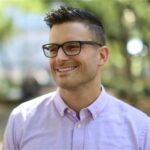

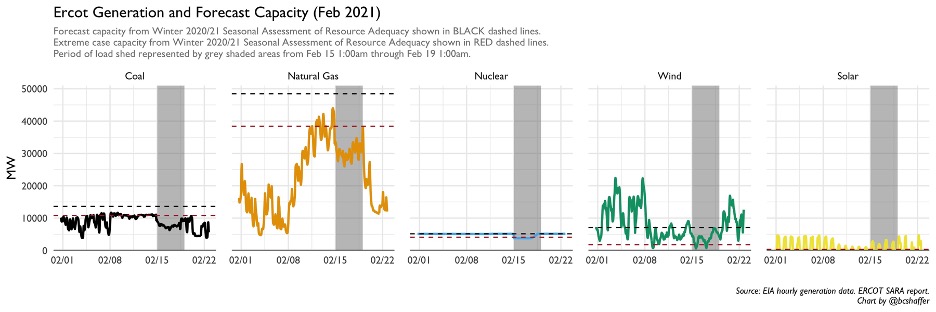
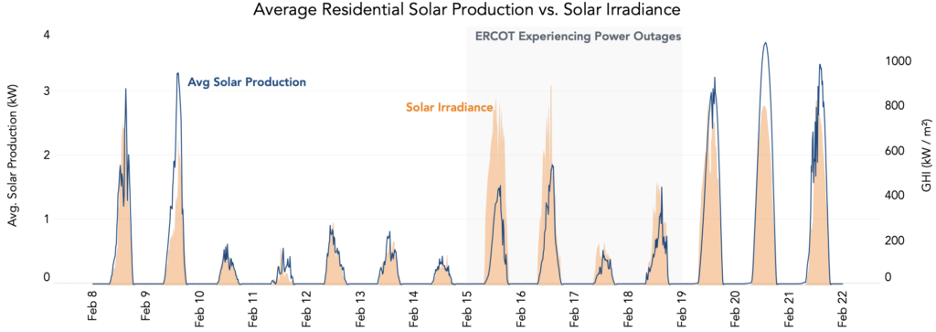

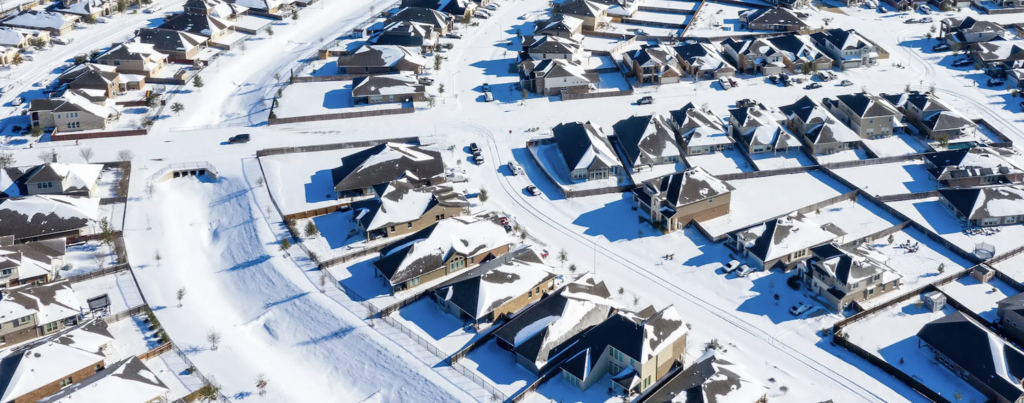
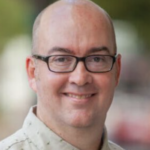
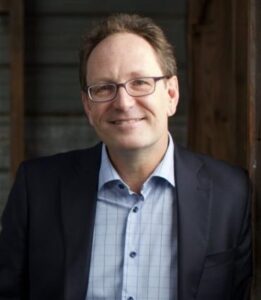 February 22, 2021
February 22, 2021